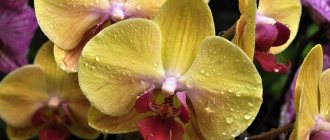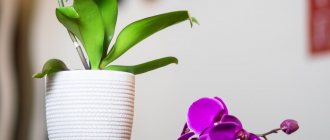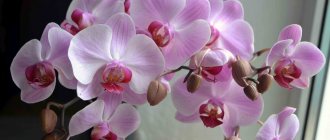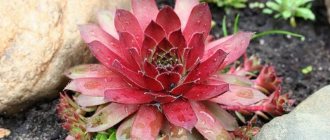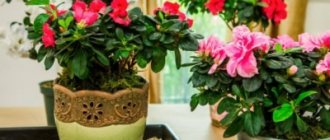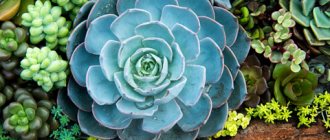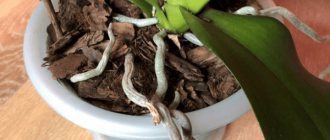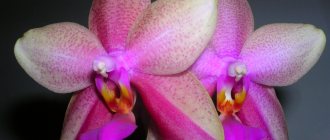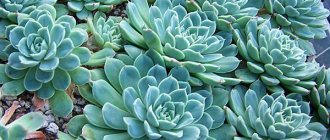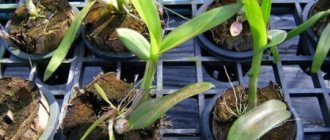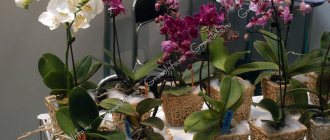Diseases and pests
Orchids, like many flowers, are susceptible to a variety of diseases. Therefore, if you have to wonder why a plant loses its decorative appearance, it means that there is a possibility that the flower has contracted one of the bacterial or fungal infections. The most common among them are:
- Fusarium If a plant is frequently overwatered or planted in unsuitable soil, it may suffer from this disease. Fusarium cannot be treated, so after infection you will have to throw out the pot;
- black rot. With this disease, the orchid leaves become jet black. The affected parts must be cut off and the plant treated with fungicides. If you immediately begin to resuscitate the flower, then it can still be saved;
- Botrix. With this disease, dark spots appear on the leaves. If treatment is not started in time, the orchid petals will also suffer. Not only will they become covered with these spots, but they will also begin to crumble.
In addition to diseases, phalaenopsis can be susceptible to attack by pests. The most common among them are spider mites, thrips, scale insects, aphids and mealybugs. They suck the juices from plants, and their leaves begin to wither and turn yellow. To prevent this from happening, you first need to wash off the pests with water, and then treat the orchid with insecticides. Actelik and actara have proven themselves well in the fight against parasites.
Mealybug on flowers
Phalaenopsis is an unpretentious flower and is easy to care for. If you re-read everything written above about phalaenopsis, caring for it at home and do everything correctly, the room will drown in the colors of this unique plant.
Tags: stone, orchid, rose, phalaenopsis About the author: admin4ik
Phalaenopsis flowering
Vanda orchid: main varieties and home care options
Orchids produce flowers 2 times a year, sometimes three. The diameter of the bud is 2-15 cm. Peduncles can be strewn with 3-40 pieces. flowers. It depends on the condition of the plant and its branches. There are plants with flower stalks up to 1 meter and buds up to 100 pieces. The color palette of Phalaenopsis varies from white to dark purple, from yellow to reddish. Distinctive features are veins, specks, spots of various tones. There are Phalaenopsis species that can produce pleasant aromas. Flowering lasts from 8 weeks to six months.
In order for Phalaenopsis to bloom well, it needs to create favorable conditions: optimal lighting, temperature, watering, adding minerals, and moisture. On southern windows, the plant produces buds more often and earlier, but it must be protected from the scorching sun. It is necessary not to over-moisten the soil so as not to block the flower stalks with new shoots.
For better flowering, it is necessary to fertilize orchids 1-2 times a month. First, water the plant, then apply fertilizer.
Bloom
The growth process of Phalaenopsis is continuous. To stimulate flowering, you can slow down its growth in the spring by lowering the temperature. Thus, the orchid will release buds faster.
Fluctuations in temperature affect flowering. Changes of 4-5 degrees day and night contribute to lush and intensive growth of buds. Hot weather at 32-35 degrees contributes to the growth of leaves, but does not contribute to flowering.
After the buds wither, the peduncle is not cut off, as flowers may form again or a new shoot will grow. Or you can cut off the arrow 1 cm above the dormant bud. This procedure stimulates the formation of a new shoot or children.
Some species of Phalaenopsis bloom on the same peduncles for many years.
Conditions and care
Pests of phalaenopsis orchids and their treatment with photos and descriptions of how to preserve the “royal flower” from the invasion of parasites
According to the description, the stone variety of orchid needs high-quality and regular care, otherwise the crop not only ceases to please with its appearance, but also dies
It is for this reason that it is so important to choose the right container for planting, substrate, set up an irrigation system, choose a permanent place for further growth, and much more.
Capacity
The choice of container is approached responsibly, since the root system is an integral element of photosynthesis. It is for this reason that a transparent container made of glass or plastic is perfect. Drainage is used as desired.
Accommodation in an apartment
If you plan to grow a stone variety of orchid at home, then favorable conditions must be created
The place where the culture will be located is of no small importance. Thus, it is recommended to choose a shaded place
Direct sunlight should not touch leaves or flowers. You can place the pot away from the window, but then additional artificial lighting will be required. The duration of daylight hours deserves special attention, which should not be less than 12 hours, otherwise the flowering period may not wait.
Temperature and humidity
The “Stone Rose” orchid needs high-quality care, which depends on the time of year. Thus, in the summer, the peak of beauty occurs, so in the shade the temperature should not exceed +20 degrees. If the temperature is higher, the buds will begin to fall off. In winter, when flowering has not yet begun, +15 degrees is sufficient. When the first flower stalks begin to appear, the temperature is increased by 5-6 degrees.
A high level of humidity is not required, so you should not spray the orchid daily, as this can lead to rot. The optimal humidity level is from 45 to 50%. If in winter the humidity level drops below the permissible level, then spraying the leaves is allowed.
Advice! Water should not get on the flowers.
Watering
There are several ways to water a stone orchid, the most popular are:
- The pot with the plant is immersed for some time in a container filled with water.
- Water to the very roots in the shower.
During the flowering period, it is best to water at the root, which will allow you not to disturb the flower again, and also not to change the original location, since orchids can quite easily shed their flower stalks.
Watering must be moderate
It is important to ensure that the root system is not constantly in water, as this can lead to a number of diseases. Thus, many experienced gardeners recommend letting the roots dry out a little.
If flowering has not yet occurred, the plant is immersed in water. To do this, lower the pot into another container and wait until air bubbles stop appearing
After this, it is important to completely remove excess water. For irrigation use water with a temperature of +29 degrees
It is not recommended to use liquid with high humidity levels.
Top dressing
For this variety, it is recommended to use fertilizers specifically designed for this purpose, sold in specialized stores. During flowering, fertilizing is applied several times throughout the month in small dosages. If flowering occurs in autumn or winter, then the amount of fertilizer must be reduced by 2 times. Since salt deposits may begin to accumulate in the soil, the substrate is washed monthly under running water for 20-25 minutes.
Orchid care at home
Every buyer, when purchasing a flower, thinks: “How to care for Phalaenopsis?” There are no particular problems with this. You can use these recommendations.
Ludisia orchid: main types and home care options
Phalaenopsis orchid care at home:
- Temperature in the house. The thermal conditions in the room for orchids are optimal. Air conditioning can negatively affect the plant. He dries it out. Therefore, the orchid will have to be moistened. Also, the orchid does not tolerate drafts well. In order for buds to appear on the flower, you can lower the temperature during the day to 12 degrees, and at night by another 2 degrees. You need to move to normal temperature gradually.
- Lighting. In the summer, it is better to limit the bright rays of the sun, as the leaves of the orchid may burn. It is better to choose east or west windows so that the light is diffused. In winter and autumn, additional lighting is needed so that the flower blooms and the leaves do not turn yellow. For example, one plant needs a 40 W lamp.
- Watering. To see the root system of a flower, you can plant it in a transparent pot. You can determine the need for watering by the color of the roots. When the roots turn light gray, then moisture is required. You can water by immersing the pot in a container of water for 5 minutes. This way the plant will take as much moisture as it needs. In opaque pots you need to focus on the top layer of soil. If it is dry, you need to give it resuscitation - moisturize it.
Important! The main thing when watering is not to overwater the flower, as the roots will begin to rot.
To prevent rot, the Phalaenopsis flower is occasionally taken out of the pot and the roots are examined. Damaged shoots are cut off. The soil needs to be replaced. In the cold season, watering is reduced, in the warm season it is increased. With a lack of moisture, orchid leaves become thinner and turn yellow.
Picture 2 Watering an orchid
- Priming. The soil should dry out quickly. Basically they make the following composition:
- Pieces of expanded clay, polystyrene foam;
- Sphagnum moss;
- Oak or pine bark;
- Pome husk;
- Charcoal;
- Perlite.
This composition promotes air access to the roots. By the appearance of the plant you can understand that the soil is selected correctly. All soil components must be thoroughly washed and thermally treated. The moss is soaked for a day, the solid components are washed. Everything that is possible is calcined in the oven. These procedures will prevent the development of fungi and pests.
- Fertilizers. Orchids need to be fed periodically. Apply soluble mineral fertilizers with phosphorus, nitrogen, and iron. These components improve flowering, leaf growth, and plant protection from diseases. Pieces of banana peelings can be used as organic natural additives.
Important! When using organic fertilizers, you should not overdo it, so as not to provoke rotting.
The most popular fertilizer is an orchid stick soaked in minerals. It is inserted near the wall of the pot. When watering, the fertilizer gradually dissolves.
You can also familiarize yourself with caring for orchids on the YouTube channel “Phalaenopsis by Georgy Goryachevsky”
Home care
Truth and fiction about the blue phalaenopsis orchid: history of appearance and maintenance tips
It is not recommended to immediately replant newly acquired echeveria. She needs to be given a little time (1.5–2 weeks) of quarantine: this way you will make sure that the plant is not affected by any diseases.
It is vital to replant the succulent, since the soil in which the plant was transported is not suitable for subsequent maintenance. Young specimens are replanted annually, slightly increasing the size of the pot. But after three years, transplantation is carried out every 2-3 years.
The succulent is very light-loving and is not afraid of hot sun rays, so it is better to choose south or south-east windows for echeveria. If the plant is located on a north or north-west window, it is better to provide it with additional illumination with a phytolamp.
You need to be careful with water: stone rose does not tolerate stagnation of moisture. Water it only after the soil in the pot has completely dried.
Features of flowering
Black orchid: varieties, propagation, flower care rules
An orchid can surprise you with its color
Different phalaenopsis have different duration and flowering time, for example:
- 1 month - Hieroglyphic;
- 3 months - Stuart (from January), Schiller (winter); Mini Mark Maria Teresa;
- 4-6 months - Amabilis (autumn and winter), Sandera (spring and summer),
With good care, Konskiy, Sandera, Schiller, and Stone roses can bloom constantly.
The stone rose can surprise anyone when it blooms, which is what makes it unique.
In addition, being one of the “parents” of Magic Art, it gets along well with it in the same plant and appears when the latter blooms. If you're lucky, you can buy an orchid that has flowers on one peduncle of these 2 varieties. But that’s not all: they coexist peacefully even in the same flower, dividing it in half.
Phalaenopsis - varieties (key)
The Phalaenopsis orchid has a wide variety of varieties. There are so many of them that there is not a single catalog that would include all the colors that exist today.
We present to your attention a guide to phalaenopsis varieties with photos. We hope you will find your favorite here too.
Phalaenopsis orchids, varieties starting with the letter “A”
| Anthura marbella flower 8 cm | Aphrodita flower 6 cm |
| Antwerpen flower 7 cm | Aranca flower 7 cm |
| Apple Blossom flower 8 cm | Astral flower 7 cm |
| Atlantis flower 7cm | Alice Girl flower 5 cm |
| Amadeus flower 7 cm | Almeria flower 8 cm |
| Amalfi flower 8 cm | Amore mio stripe flower 3 cm |
| Amolar flower 6 cm | Ancona flower 7 cm |
| Angel Face flower 9 cm | Anna White flower 10 cm |
| Anthura Carmelo flower 4 cm | Annapolis flower 8 cm |
| Anthura Darwin flower 8 cm | Anthura Gold flower 5 cm |
| Alaska flower 7 cm | Autumn Wind flower 8 cm |
| Aberdrot flower 9 cm | Alfonco Moreno flower 8 cm |
| Autumn Sun flower 5 cm | Autumn Sun 'Hawaii' flower 5 cm |
| Arakaki White World Dream 'Kitty' | Anna Larati Soekardi |
| Arakaki 'Spring Fairy' flower 8 cm | Arakaki Spring Fairy 'Arakaki 1′ |
| Anastasia flower 8 cm | Alexandra flower 7 cm |
| Adelaide | Alabaster |
Part 2
Part 2
Phalaenopsis varieties by color - YELLOW
Phalaenopsis orchids, varieties starting with the letter
"A" "B" "C" "D" "E" "F" "G" "H" "I" "J" "K" "L" "M" "N" "O" "P" "Q » "R" "S" "T" "U" "V" "W"
"X" "Y" "Z"
Related posts:
Category: Orchids | Tags: varieties, phalaenopsis | Permanent link
Natural types of cattleya
Natural varieties are classic tropical epiphytes, whose roots never touch the soil and absorb the substances necessary for nutrition from the air and dew. They are common in the Amazon basin and the rainforests of South America.
Cattleya bicolor
One of those species that botanists classified back in the 1830s. It grows in size by more than 50 cm, and Cattleya bicolor flowers are medium in size, about 5 cm. The lip is purple, the color of the rest of the flower is brownish, with a green or orange tone. Flowering occurs in the autumn and winter months.
Cattleya dinar
The variety is distinguished by the delicate appearance of its flowers and rich aroma: against the background of a bright purple lip and yellowish neck, graceful petals of a light pinkish hue bloom. This spectacle can be seen in spring or autumn.
Cattleya maxima
Cattleya Maxima has a number of subspecies. They are united by the warm shades of the petals. The ground color may be whitish or purple, and the core color may be yellow. Each peduncle can produce a dozen flowers, emitting a light but pleasant scent.
Cattleya mix
Cattleya mix has bright pink petals. The height of the variety reaches 50 cm. Its flowering occurs in autumn. The plant is moisture- and heat-loving.
Cattleya schroederae
A characteristic feature of Schroeder's Cattleya is its variety of colors, from white to purple with an orange or golden throat. The duration of bud dissolution is about a month. At least 7 inflorescences can open simultaneously on one plant.
Cattleya bowringiana
Cattleya Bowring is a large variety with a pseudobulb up to 75 cm long, several narrow oblong leaves and tall peduncles. The diameter of the flowers is average, up to 7 cm, and the color is elegant - lavender or purple. During the flowering period, from autumn to winter, up to 25 buds are formed on some specimens.
Cattleya mossiae, or Easter
The variety got its name because of the flowering time, which usually coincides with Easter. The orchid is large-flowered, with petals painted in pale pink, whitish or lilac shades, a yellowish core, and a fringed border along the edge of the lip.
Cattleya trianae
A large variety of cattleya orchid up to 50 cm in height and flower sizes up to 20 cm. Their color is light pink, beautifully combined with the rich crimson shade of the lips. Flowering occurs in winter and lasts until the end of spring.
Cattleya aclandiae
Cattleya Eklanda is a dwarf orchid that grows only 8–10 cm. It has several green elliptical leaves. A characteristic feature of the Cattleya orchid is red or almost black spots on the leaves, the number of which increases when exposed to direct sunlight. The petals are also covered with spots of dark red, purple shades. Peak flowering occurs at the end of spring.
Cattleya forbesii
A mini-orchid whose height rarely reaches 20 cm. Large flowers of beautiful greenish shades with a white lip bloom on a small plant. Cattleya Forbes was discovered and described by botanists in the middle of the 19th century.
Cattleya labiata, or big-lipped
A large-flowered orchid with lilac or pinkish petals and a deep purple lip. It has single-leaved wrinkled spindle-shaped pseudobulbs 20–30 cm long. It blooms in July-August.
Cattleya warscewiczii, or giant
Another variety of cattleya with large flowers and pseudobulbs. The size of the first reaches 25 cm. The lip is dark purple with several yellowish spots in the center. It does not bloom for long, up to 2 weeks. This period begins in May.
Description of the orchid variety Stone Rose
The stone orchid attracts attention with its bright and unusual blooms. Like other varieties, this phalaenopsis has a number of distinctive features.
External characteristics
The stone rose is not classified as a miniature one, but as a regular-sized orchid.
This variety has the following parameters:
- the root system, characteristic of phalaenopsis, has a pearl-green hue, elastic, fleshy;
- leaf plates, reaching 30 cm, are quite wide and at the same time oblong, tapering at the end;
- peduncles of the Stone Rose, growing above 70 cm, are often branched;
- Blooming flowers reach from 6 to 9 cm in diameter.
Color range of hybrids
The color scheme of phalaenopsis is varied. They usually come in white, pink, cream, yellow and yellow-green shades of petals and sepals. However, hybrid varieties sometimes have amazing patterns formed from inclusions, stripes and even hieroglyphic images.
The color range of hybrids is represented by gold, peach, orange, almost blue and black, as well as violet-raspberry shades. The latter range is characteristic of the phalaenopsis Stone Rose.
The color accent on them is the white edging of each part of the flower. The color palette of different representatives of this variety is distinguished only by the degree and location of the border and inclusions of white color.
Features of flowering
Most orchid plants are characterized by a long flowering phase, reaching six months. The duration of flowering largely depends on the phalaenopsis variety.
For Stone Rose, the duration of this phase, with proper maintenance, is from 2 to 3 months. The plant can bloom at any time of the year.
To preserve flowers on an orchid for as long as possible, it is recommended not to change the location of the phalaenopsis and maintain a constant temperature.
Stone rose orchid: photos of prominent representatives
During the flowering period, the nature of the edging, the location of highlights, inclusions of white color on the petals and sepals in some cases are similar to the accidental touch of an artist’s brush. On any representative of this variety, the flowers of the phalaenopsis Stone Rose look like tropical butterflies.
Description of the plant
One of the favorite plants of landscape designers is Sempervivum (Latin: “always alive”), or Stone Rose. With its help, they create amazing needle-shaped fields in gardens, collect incredible compositions in flower beds and add color to the greenery.
In our area, Molodilo is often called “Stone Rose”. Looking at the plant for the first time, the association with this particular flower immediately comes to mind. And he was nicknamed the stone one for his unpretentiousness, endurance and good adaptation.
Juvenile is a succulent with flat, dense or pointed leaves that form a rosette. The rosette is located directly on the ground, without a pronounced stem, which is why the stone rose is used as a ground cover plant.
The color of a stone rose varies. In sunny areas it is brighter and has different colors, and in the shade it is green with a small red border along the edge of the leaves.
Stone rose is distinguished by its frost resistance and method of propagation. The plant produces “whiskers” on which children are formed. Loves sun, little watering and fresh air. But with all the love for natural conditions, the youngsters perfectly adapted to domestic conditions.
Transfer
The Stone Rose requires it in the following cases:
- the container is small: the plant rises above it and the roots crawl out into the drainage holes;
- replacement of the substrate (every 2-3 years);
- dividing the plant;
- treatment.
It is optimal to replant a flower in a dormant state. In this case, the tool and cuts are processed in the same way as when trimming a peduncle. If the substrate needs to be replaced, it is prepared in advance. Water will simply flow down dry bark, so it is placed in water for a day or two for impregnation. After this, the bark is washed and then used for substrate.
All cuts must be processed
The transplant happens like this:
- The orchid is removed from the old pot. The roots that interfere with this, which have crawled out into the drainage holes, are trimmed;
- When replacing the substrate, the roots are freed from the old one. If it does not separate well, the roots are washed in a basin with warm water and dried for 1-2 hours;
- the roots and flower are examined. Everything rotten and dried is cut off, pests are destroyed, and the cuttings are processed;
- The orchid is placed in the middle of the pot, at the bottom of which there must be drainage (expanded clay, polystyrene foam) and a layer of medium-fraction bark. Then its roots are covered with a substrate made from a mixture of fine bark and moss - it will allow the roots to be covered without voids that will interfere with flowering;
- After transplanting into a dry substrate, the flower needs to be watered. Transplanting into moist soil does not require watering.
What do you need to know before buying a plant for your home?
You have decided that you want to grow rock roses at home. How to prepare for a meeting with a plant?
A small checklist below.
Read about the Stone Rose. Find out what conditions she needs, what is ready in the house, and what you will have to buy in addition to create them.
What you will need to replant and care for it.
In the store, be sure to pay attention to where the plant stood. Was there backlighting? Stone rose loves sunny color, in the shade it loses turgor and changes color
Are there doors or windows nearby? Are there any drafts? Ideally, the plant is located in conditions close to natural.
Look closely at younger plants. They tolerate stressful situations better and adapt to new conditions more easily.
Check the soil. If it's wet, ask your dealer when it was last watered. If it is very damp and there is a lot of water in the pan, the plant is flooded, there may be problems with the roots.
Inspect the flower for parasites. Is there a coating on the leaves? Damage to the stem? If you decide to buy such a plant, be prepared to rehabilitate it. If the plant is blooming, choose one that has fewer buds but more open flowers.
Don't forget about packaging, and in winter you also need to protect from the cold.
Transfer
We invite you to read: Description and characteristics of tomato variety Wild Rose
Note! The flower needs to change the substrate and pot size every 3 years. In order for the orchid to successfully grow and develop further, you must follow the step-by-step instructions for replanting:
In order for the orchid to successfully grow and develop further, you must follow the step-by-step instructions for replanting:
- First, the orchid needs to be removed from the pot. If you can’t pull out the flower, you can crush the pot or even cut it.
- The roots need to be freed from the old bark; if any piece has grown to the flower, then it’s not a big deal.
- It is imperative to remove rotten or dead roots, but it is better not to touch the healthy part.
- Before planting, the flower must be dried. This process takes on average 2 hours.
- Phalaenopsis is planted in the soil and not watered for 5 days. Also, it is not recommended to apply fertilizing during the first month.
Transfer
Description of the variety
In the wild, Phalaenopsis orchids live in humid, warm forests. They originated in Asia and number about 70 species. According to the description, the structure of orchids consists of tuberidia or pseudobulbs, but Phalaenopsis lacks all of this.
This is a monopodial orchid that grows slowly in height. Orchids are propagated using bulbs. How many years an orchid lives depends on the amount of vital energy of a flower, but it decreases when flowering and development of children are stimulated. During the breeding season of Phalaenopsis, fertilizers and fertilizing must be used.
Description of leaves and tree
Phalaenopsis is an orchid with a special rhythm of development, growth and smell. To determine the age of a plant, count the number of large leaves.
An adult tree has the shape of a rosette with two rows of leaves arranged.
The house Phalaenopsis orchid has a short stem that grows upward. And the aerial root system is well developed. Their thickness is up to 7 mm in diameter. The roots are covered with a layer of special absorbent tissue - velamen. They have a silvery-green color.
Phalaenopsis at home reaches 50-70 cm. In a healthy plant, the rosette consists of 4-6 leaves. Up to 2 new leaves appear during the year. They are dense and colored a rich dark green. They have an oblong-oval shape. They are located alternately, and a peduncle grows between them.
Description of colors
Peduncles, depending on the type, are long (up to 80 cm) and short (about 20 cm). They have curved or straight shapes. Flowers also have different diameters from 2 to 15 cm. They are collected in racemose inflorescences and resemble the shape of a butterfly or star. The growth period varies from 2 months to six months.
The Phalaenopsis orchid has a pleasant and unobtrusive aroma.
The house Phalaenopsis orchid blooms twice a year - in spring and autumn. The flowering period depends on the interaction of the general condition of the plant and the characteristics of its care.
Types of varieties
The phalaenopsis flower is distinguished by the size of the leaves, the length of the peduncle and the color. Characteristics of varieties:
| Variety name | Description |
| Amabilis | Leaves are from 30 to 50 cm, green, up to 12 cm in diameter. The petals are white and the flower lip is yellow or peach. Amabilis bloom from early autumn to March. |
| Schilleriana | Flowers come in purple or single color. Blooms in winter. |
| Stuart (Stuartiana) | Peduncles are long - 80 cm in length. The petals are purebred with red spots at the base. They bloom from mid-winter to March. |
| Amsterdam Jordan | Raspberry petals in a dark dot. The lip has a burgundy tint. |
| Horse (Equestris) | Pleasant aroma and large leaves up to 13 cm. Flowers purple or lilac. |
| Natasha (Natasha Aiko) | It has 3 pairs of leaves and reaches 12 cm in height. Pink or green with spots all over the flower. |
Variegated Phalaenopsis variegated includes varieties: Filipinensis and Lindeni. The species Stone Rose, Little Zebra, Sumatra, Ping, Rossini and Sacramento are famous for their crimson shades, and the small-flowered variety Phoenix, Venus, Violet, Tonka and Pulhra are famous for their rich scent.
The Phalaenopsis orchid has many varieties.
Yellow petals: Solid Gold, Nina Queen, Yara, Mango and Maya with red splashes. The ampelous saffron milk cap is colored orange, like Surfsong and Novelty.
Varieties with white petals:
- Leopard Prince;
- York;
- Pinglong;
- Ikaria;
- Leonardo;
- Cambridge;
- Phalaenopsis super Beautyful.
- Tetraspis and Gemeng - white petals with red dots.
Purple color is characteristic of the varieties Phantom and Extra, Multi, Martin, Angel, Nyezhdnik, Cherry and Jewel. The Manna species has green leaves with purple dots.
The Mandala variety has creamy caramel petals with a Leopard lip. Sesame is distinguished by a tiger pink and white pattern on its petals. Interesting flowering species: Panda, Elegant, Deborah, Aloha, Leo, Ravello, Zion and Tabor.
Characteristics of the variety
Phalaenopsis are divided according to growth into:
- ordinary, growing up to 1 meter;
- miniature (mini), which do not exceed 30 cm in height.
Based on external features they are divided into:
- standard, with large flowers and an apical bud at the end of the peduncle, which dries up after flowering ends;
- multiflora, with a thick curly peduncle and an abundance of successively blooming buds;
- novelty, with many peduncles and constant flowering.
Stone rose is a common orchid. It has a branched peduncle up to 80 cm high. Sometimes she is defined as “midi” based on her height. Like all phalaenopsis, its vertical stem grows upward.
The wide leaves, collected in a rosette, are of medium length (20-30 cm), and the flower is of medium diameter (6-9 cm). If its flowers are formed by very dark and shiny petals, it is called “black wax”.
No matter how the flowers change in size and color, they always resemble a butterfly in shape.
External description of the flower
The coloring of phalaenopsis is incredibly varied. Most often they are white, pink, cream, yellow and yellow-green.
But the hybrids have completely unimaginable patterns on the petals: a speck, a stripe, even a hieroglyph (and this is not a figure of speech - there really is a Hieroglyphic variety).
They are also endowed with unusual colors: gold, peach, orange, almost blue and black, deep crimson.
The latter is characteristic of the Stone Rose orchid. Its petals, surrounded by a white border, are richly colored in all shades of crimson. On the reverse side they have marble stains with greenish veins.
The varieties Sumatra, Ping, Sacramento, Rossini and Little Zebra bloom in the same color scheme.
Transfer
Note! The flower needs to change the substrate and pot size every 3 years. In order for the orchid to successfully grow and develop further, you must follow the step-by-step instructions for replanting:
In order for the orchid to successfully grow and develop further, you must follow the step-by-step instructions for replanting:
- First, the orchid needs to be removed from the pot. If you can’t pull out the flower, you can crush the pot or even cut it.
- The roots need to be freed from the old bark; if any piece has grown to the flower, then it’s not a big deal.
- It is imperative to remove rotten or dead roots, but it is better not to touch the healthy part.
- Before planting, the flower must be dried. This process takes on average 2 hours.
- Phalaenopsis is planted in the soil and not watered for 5 days. Also, it is not recommended to apply fertilizing during the first month.
Transfer
Phalaenopsis fringed
Growth:
East and Central Java, Sarawak and Sumatra. Phalaenopsis fringe is found on Mount Kinabalu and mountain passes at an altitude of 792–1311 m above sea level. It usually grows in fairly well-lit places, on trees under the sun penetrating the foliage or in moss on the southern or eastern slopes of limestone cliffs, where the plants are illuminated by bright reflected light.
Climate in natural habitats:
- Recorded temperature range from +15.0°C to +31.7°C.
- Average humidity is 75–80%.
- Precipitation from 13 mm. in March up to 602 mm. in July.
- Average temperatures (day/night) throughout the year are +26–27°C/+19–20°C.
Description of the plant:
Plant size and type:
Phalaenopsis fringe is a small to medium-sized monopodial epiphyte or lithophyte up to 15–23 cm high.
Pseudobulbs:
None.
Leaves:
Each plant has from three to five leaves 15–23 cm long. The leaves are elliptical, curved, with wavy edges.
Peduncle:
During the year, fringed phalaenopsis usually produces two curved or curved peduncles 25 cm long. Flowers are rarely located in the inflorescence.
Flowers:
Numerous flowers with a diameter of 2.5–3.8 cm bloom simultaneously. The pointed, fleshy petals and sepals can be white or pale apple green with dark red spots. The lip is white with yellow and red-purple spots and strongly fringed edges.
Flowering period: from March to May.
Agricultural technology:
Temperature:
The average daytime temperature throughout the year is +26–27°C, the average night temperature is +19–20°C, which gives a daily difference of 6°C. These are the maximum values that are observed under natural conditions; in care, the temperature should be slightly lower. Phalaenopsis fringe does not tolerate very high temperatures during the summer heat.
Lighting:
12,000–14,000 lux, which is higher than most other Phalaenopsis. This species can grow on a windowsill, in the sun shining through the foliage of trees outside the window, provided that the daytime temperature does not exceed +27°C and there is good air circulation.
Watering:
Phalaenopsis fringe needs to be watered abundantly, but the substrate should dry quickly after watering. For irrigation, you need to use warm water with a temperature of +18°C. The dry period in the natural habitat of this orchid lasts 2–3 months.
Fertilizer:
During the growing season, you need to feed the plant with 1/4–1/2 dose of orchid fertilizer once every one or two weeks.
Substrate:
To reproduce the conditions in the natural habitat of this plant, you can use a substrate consisting of pieces of volcanic rock with a diameter of 13 mm, which dries quickly after abundant watering. Replanting is best done immediately after flowering or at any other time when new roots are actively growing.
Air humidity:
75–80% throughout the year. Constant ventilation is very important for this orchid.
Rest period:
In winter, the average daytime temperature is +26–27°C, the average night temperature is +19–20°C, and the daily difference is 7–8°C. It is necessary, if possible, to strictly observe the temperature regime. The illumination level can be increased to 15,000 lux for about two months. Humidity should be reduced to almost 65%, and watering should be limited to rare sprays. Feeding should be stopped. Editorial team LePlants.ru
Pink Phalaenopsis Rosea
The Phalaenopsis genus includes about 50 plant species. All of them belong to the Orchidaceae or Orchidaceae family. They are distinguished by wide leaves and butterfly-like flowers, the petals of which are complex and painted in pastel colors.
Pink phalaenopsis (Phalaenopsis rosea) is one of the smallest subspecies, an epiphyte . The plant's favorite habitat is river banks.
Phalaenopsis rosea.
The rosette consists of 2-5 oblong leaves, up to 20 cm long and about 5 cm wide. On a short peduncle about 30 cm long there are about 15-20 small white-pink flowers , which bloom one after another.
The inflorescence can be simple or branched, arched. The size of the flowers in diameter is 25 mm.
Flower appearance:
- sepals are pink in color with vertical white stripes, oblong;
- the lip is small with three lobes, colored from pink to dark purple.
Phalaenopsis can delight you with its flowering at any time of the year. “Children” regularly appear on faded flower stalks, which can be used to propagate the plant.
Phalaenopsis rosea is native to the lowlands of the Philippine Islands and Taiwan.
Conditions and care
For an orchid, comfortable conditions will be:
- humidity from 30 to 40%;
- ventilation and air circulation;
- temperature - 15-25˚C;
- diffused light or partial shade.
Stone rose is capricious, like any beauty. If you don’t like the new house, it won’t bloom or even live there, despite the most wonderful conditions. Conversely, it will briefly withstand both higher (up to 42˚C) and lower (up to 12˚C) temperatures and other maintenance flaws, if everything is happy.
Caring for it consists of providing the necessary conditions.
Capacity
Select a transparent container: the roots need access to light to participate in photosynthesis. In size it should exceed the root part by 2-3 cm.
In addition, the roots need air circulation, so it is necessary to have drainage holes in the bottom and sides of the flowerpot.
Accommodation in an apartment
It is better to place the flower on a western, eastern or north-eastern window with bright but diffused light. If the side is south, the plant is placed on a table under the window, protected from direct sunlight.
Temperature and humidity
The desired temperature is maintained by ventilating or heating the room. To increase humidity, the flowerpot is placed on a tray with wet pebbles, and the frequency of watering is adjusted.
Watering
Here you need to remember the following rules:
- The soil must be dry before watering. This will be indicated by a lack of moisture on the walls of the flowerpot and lightened roots, usually green.
- Only the substrate is watered. This can be done not only from above, but also from below: the flowerpot is lowered into water for 20-30 minutes to soak the substrate through the drainage holes).
- Water for irrigation is taken clean, soft and settled.
Top dressing
Fertilizers improve flowering
Phalaenopsis not only needs to be watered, but also periodically fed with fertilizers. For example, universal mineral complexes:
| Term | Name of fertilizer | Proportions | Submission rules | Way |
| 2 times/month | Kemira Lux | 1g/l water | on a wet substrate | watering from above |
With this feeding, the substrate is washed weekly with running water so that there is no excess of mineral salts.
A month after transplantation, it is recommended to feed the plant with mineral mixtures with potassium, magnesium and nitrogen. The frequency and dosage are always indicated on the packaging. Epin and Zircon are used to relieve transplant stress.
An orchid, grateful for good care, can produce 5 flower stalks per year and bloom almost constantly.
Care
Amazing flowers can hardly leave anyone indifferent. Despite their exotic appearance, they are the most unpretentious representatives of the Orchid family. They can be easily found on the shelves of flower shops and apartment window sills.
At home, there are about 70 different plant species , as well as artificially grown hybrids. The varieties differ from each other in the color of the inflorescences, the size of the leaves and the shape of the petals.
If you follow simple care rules, phalaenopsis can bloom for about 4 months, sometimes even 2-3 times a year. Not only experienced gardeners, but also beginners can pacify exotic flowers.
Photo of a blooming phalaenopsis.
For good growth and development, the plant must create optimal conditions:
- lighting at the location;
- content temperature;
- air humidity;
- watering and fertilizing;
- substrate and transplantation;
- periods of rest and active growth.
Optimal conditions of detention
Phalaenopsis is not too picky about lighting conditions. Still, a more favorable location for it would be under diffused light from the sun , for example, on a windowsill near an eastern or western window.
Direct sunlight can burn the leaves of the plant, so a south window is not the best option for it. If you want to place the plant far from the window, it will need additional lighting with special lamps.
Daylight is desirable until 12 - 15 hours. In winter, it is also useful to use lighting.
Important! In order to determine whether the phalaenopsis has enough light, inspect its leaves and rosette. The leaf blades have decreased in size and turned pale, and the internodes look thinner and elongated - this is a sign of a lack of light.
Since the plant’s homeland is tropical rainforests, in spring and summer it is necessary to maintain the temperature 20 - 24 degrees Celsius , not allowing it to drop below 18 degrees. From the beginning of autumn until spring – preferably at least 20 degrees.
Phalaenopsis love fresh air with high humidity, but are afraid of drafts. During ventilation, do not allow cold air to enter the plant.
In winter, due to central heating, air humidity decreases, so phalaenopsis must be sprayed frequently. The procedure is carried out carefully, preventing water from entering the rosette of leaves. If an incident occurs, you can extract the moisture using a cotton swab by blotting the core.
In winter, orchids need spraying.
If the tips of the aerial roots are rich green, there are no problems with air humidity.
Watering
The frequency of watering depends on the periods of its development. During growth and flowering, the substrate should be kept moderately moist. From the beginning of the dormant period, the number of waterings decreases, but overdrying the substrate is unacceptable.
Transparent containers in which orchids usually grow will help determine when the plant has rested and entered the growth stage. To do this, you should inspect the roots:
- The green color of the root tips indicates that the plant is beginning to grow;
- During the dormant period, the tips are a uniform brown-reddish-green color.
For irrigation, it is advisable to use soft water at room temperature, which does not contain salt or impurities. Ideal option: distilled, rain or melt water.
The color of the roots will tell you when to water.
Advice! A common method of watering for good hydration is to place the flowerpot in a container with water about half full.
Top dressing
Feeding is carried out infrequently, during the growth period once every 20-25 days. In this case, special complex mineral fertilizers for Orchids are used. It should be noted that the period of active growth can occur in any time period.
Transfer
The factor determining the need to transplant a plant into a new substrate is its growth. If growth has slowed down, then the orchid has “outgrown” the container and should be replanted.
The transplantation procedure requires care; it is important not to harm the roots. If possible, the old flowerpot should be cut and the root system carefully removed without destroying the substrate.
The new pot shouldn't be much larger. The choice should be made on a transparent plastic container, because it is also important for the roots to receive light.
It is better to take a soil mixture special for orchids or prepare it yourself from pieces of pine bark, sphagnum moss, charcoal and fern roots.
Step-by-step transplantation of phalaenopsis.
In general, an orchid is usually replanted once every 2 years, waiting until the end of flowering.
Bloom
The periods of rest and growth of phalaenopsis are not as noticeable as in some other varieties of orchids. Rest is determined by the general condition of the plant.
The dormant period begins after flowering. At this time, it is advisable to reduce the air temperature to 16 degrees Celsius. There is no need to replant or feed the plant.
There is no need to trim the old peduncle. If it has not dried out, you should shorten it by only 2 eyes.
Phalaenopsis blooms almost all year round. In this case, new flower stalks are formed twice a year.
To stimulate flowering, you can “organize” a difference in night and day temperatures for 2-4 weeks, as in natural conditions. This will stimulate the formation of new flower stalks. Before they appear at night it should be 16-18 degrees, after - 20-22 degrees.
Important! If the care of phalaenopsis is organized correctly, then it is practically not afraid of pests and diseases.
But from overwatering, the roots of the plant can suffer and rot. In such a situation, transplantation into a new container and a new substrate is necessary.
After purchasing in store
When purchasing an orchid in a store, you should pay attention to its general condition, roots and peduncle. In healthy specimens, the leaves are elastic, dark green, do not wrinkle, the roots are green or grayish, the aerial roots are hard and elastic.
The peduncle should have blooming flowers and buds. There should be no rot in the socket.
Green with a salad tint
Green beauty orchids are becoming more and more numerous. This is how the world works: everything that nature did not create, man tries to create.
Dendrobium Anna Green. Propagated by children and division of the peduncle. Care is standard for the main types of orchids. It is not recommended to soak the roots for a long time. Water as the soil dries out. This is very harmful for dendrobium. This hybrid can grow in an opaque pot.
The petals are yellow-green and have a bright dark crimson lip. The flowers are not large.
Phalaenopsis Bellina. Native to Borneo and Malaysia. Epiphyte. The flowers are fragrant, whitish-green with a yellow tint.
More types and varieties of pink phalaenopsis orchids
In the collections of flower growers you can find both species phalaenopsis and hybrid varieties with pink flowers.
Schiller
Among the most common is Schiller's phalaenopsis (Phlaenopsis chilleriana). Homeland - Philippines. The peculiarity of the species is its variegated leaves with a silvery coating, with dark green spots uniting into stripes.
Phalaenopsis Schiller 'Wilson'.
Phalaenopsis schilleriana - photo from Wikipedia.
It is this type of phalaenopsis that is the “father” of most hybrids. The huge number of flowers on the peduncle is another highlight. A record case – 174 flowers on a peduncle!
Stewart
Stuart's phalaenopsis (Phlaenopsis Stuartiana) is very similar to the previous species. The difference is in the branching peduncle with medium-sized flowers with a specific pattern. Its homeland is the island of Mandanao in the Philippine archipelago.
Phalaenopsis Stewart.
Mini and midi
Phalaenopsis minis are distinguished by their miniature size . Midi orchids are slightly larger - 40-55 cm high, with a leaf length of up to 20 cm and a peduncle thickness of about 7 mm. Among them there are also flowers with a pink color.
Phalaenopsis mini. Please write in the comments what variety it is.
Hybrids
Hybrid varieties of phalaenopsis orchids:
- pink-cherry phalaenopsis;
- pink Dragon;
- blue pink;
- pink Panther;
- pink dreams;
- Grandiflora Chameleon pink;
- royal double pink phalaenopsis.
Phalaenopsis Pink Dragon.
Pink Phalaenopsis Singolo.
Pink Panther (Phal. Pink Panther).
Phalaenopsis Pink Dream (Pink Dreams).
Grandiflora Chameleon.
Pink royal phalaenopsis.
